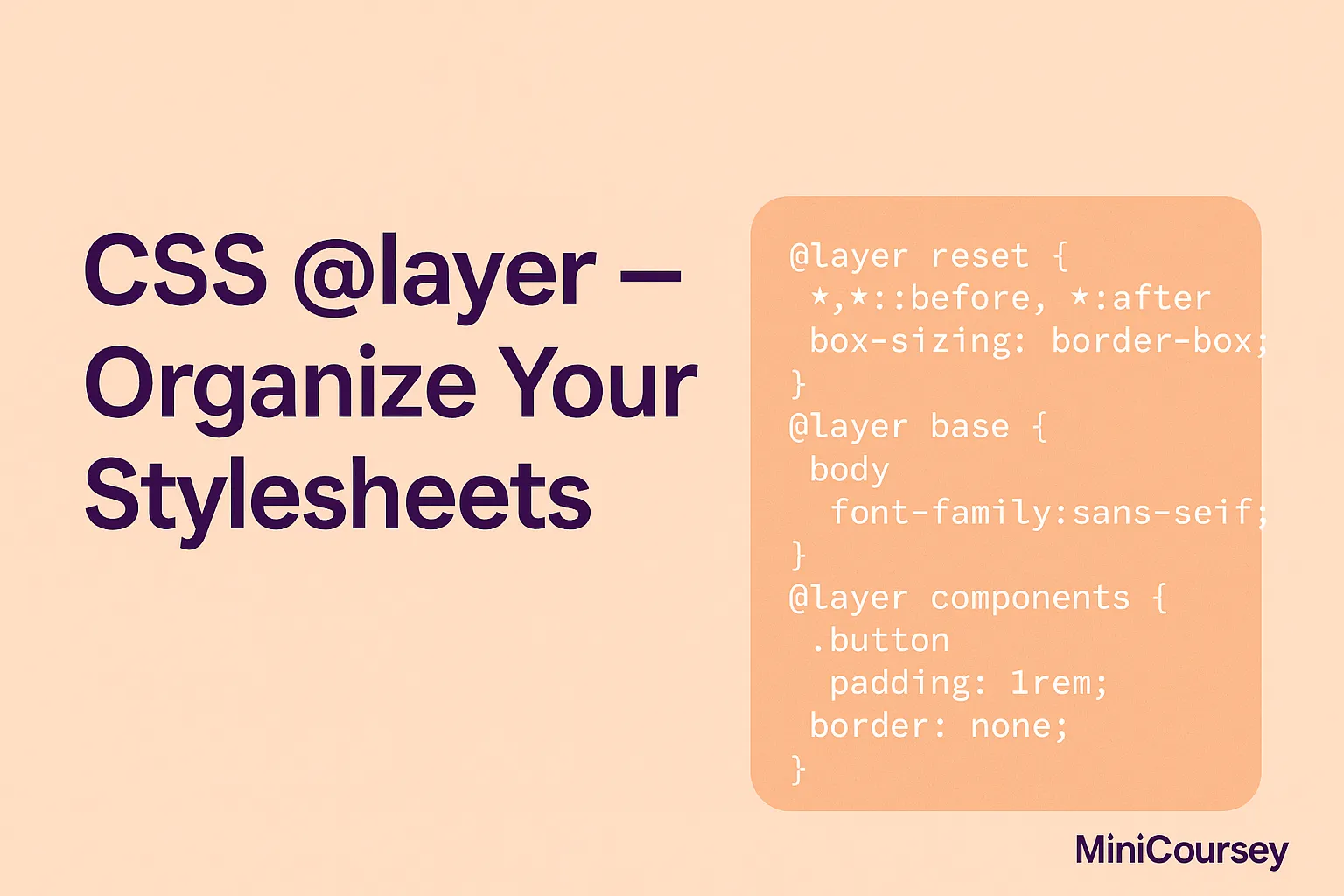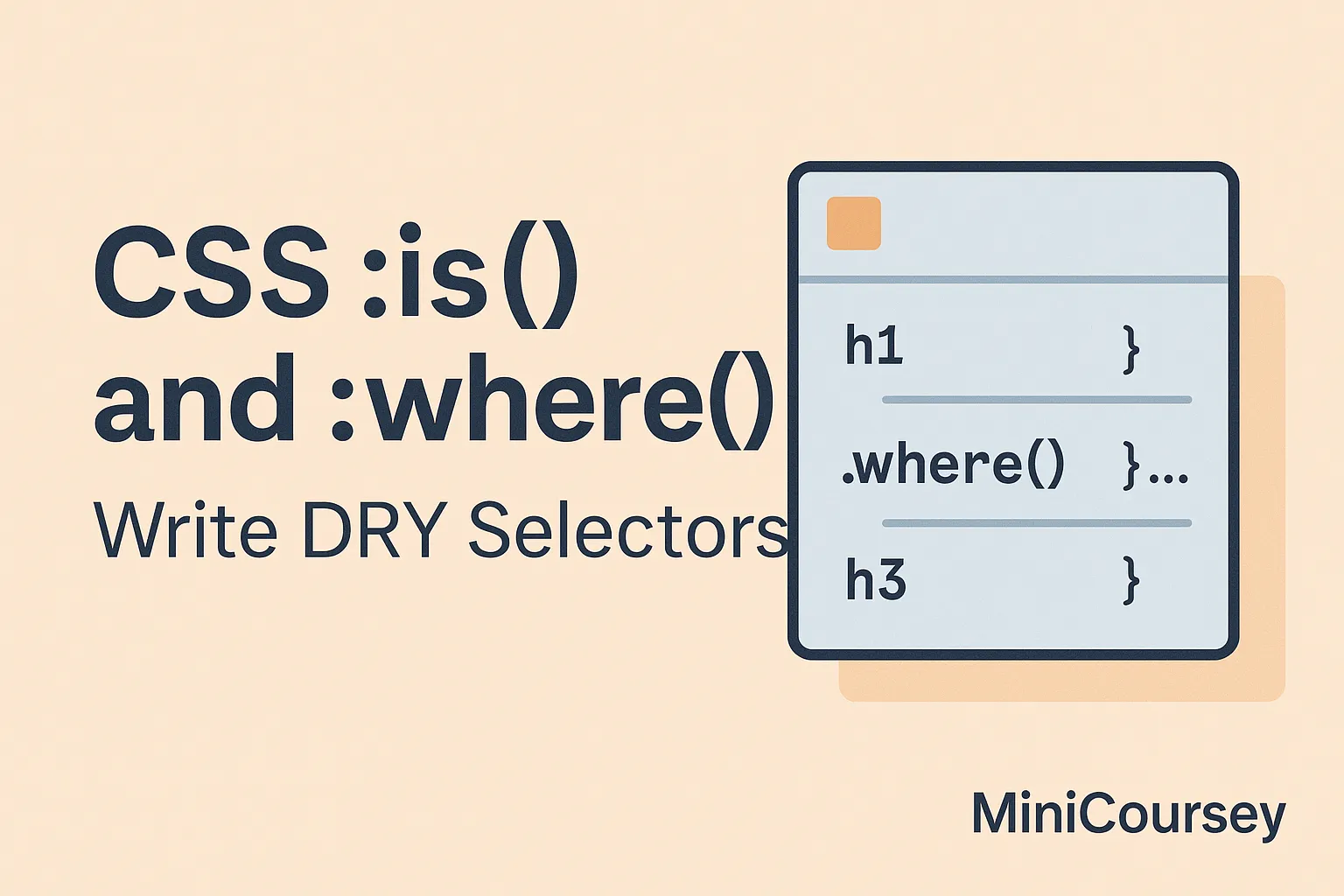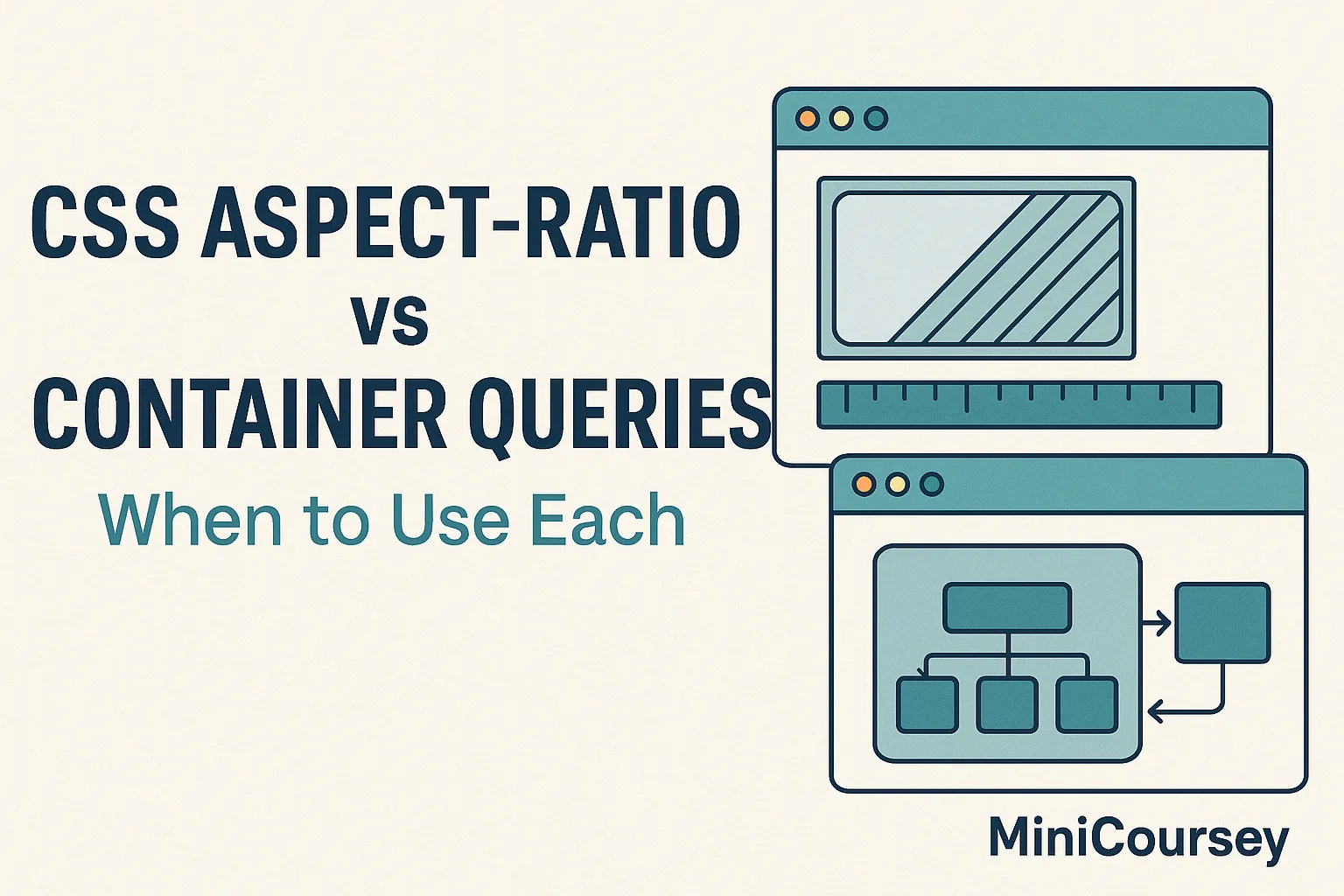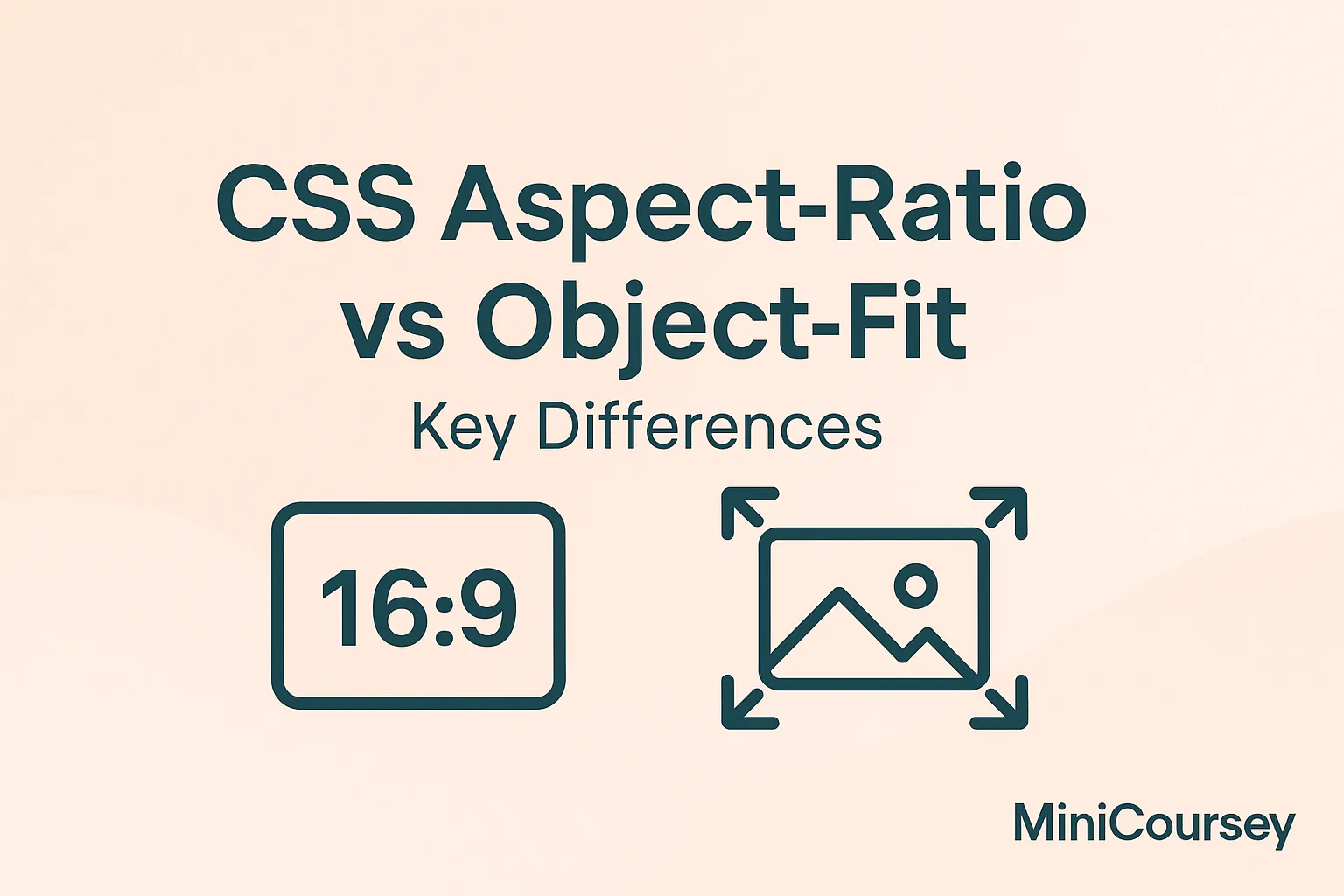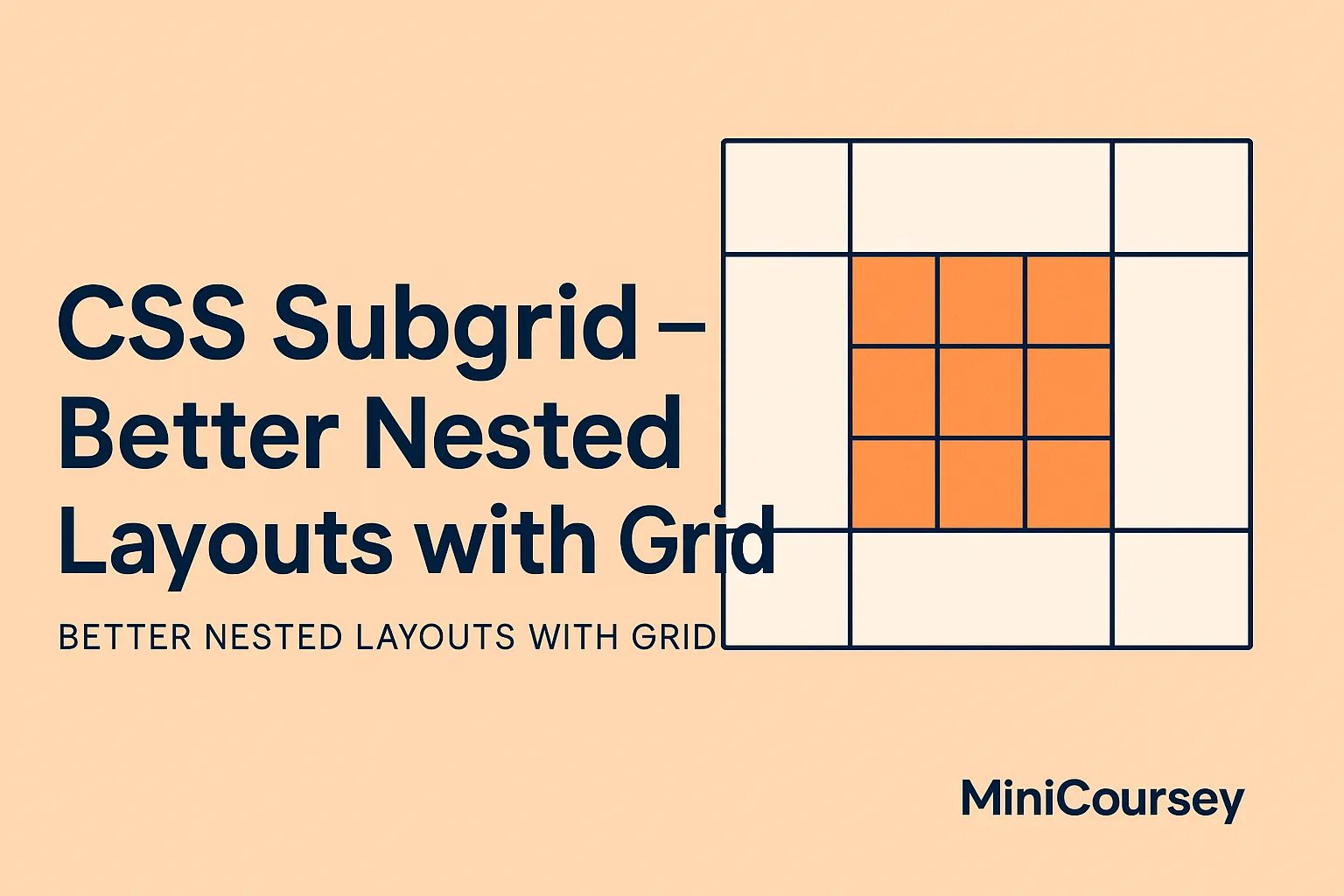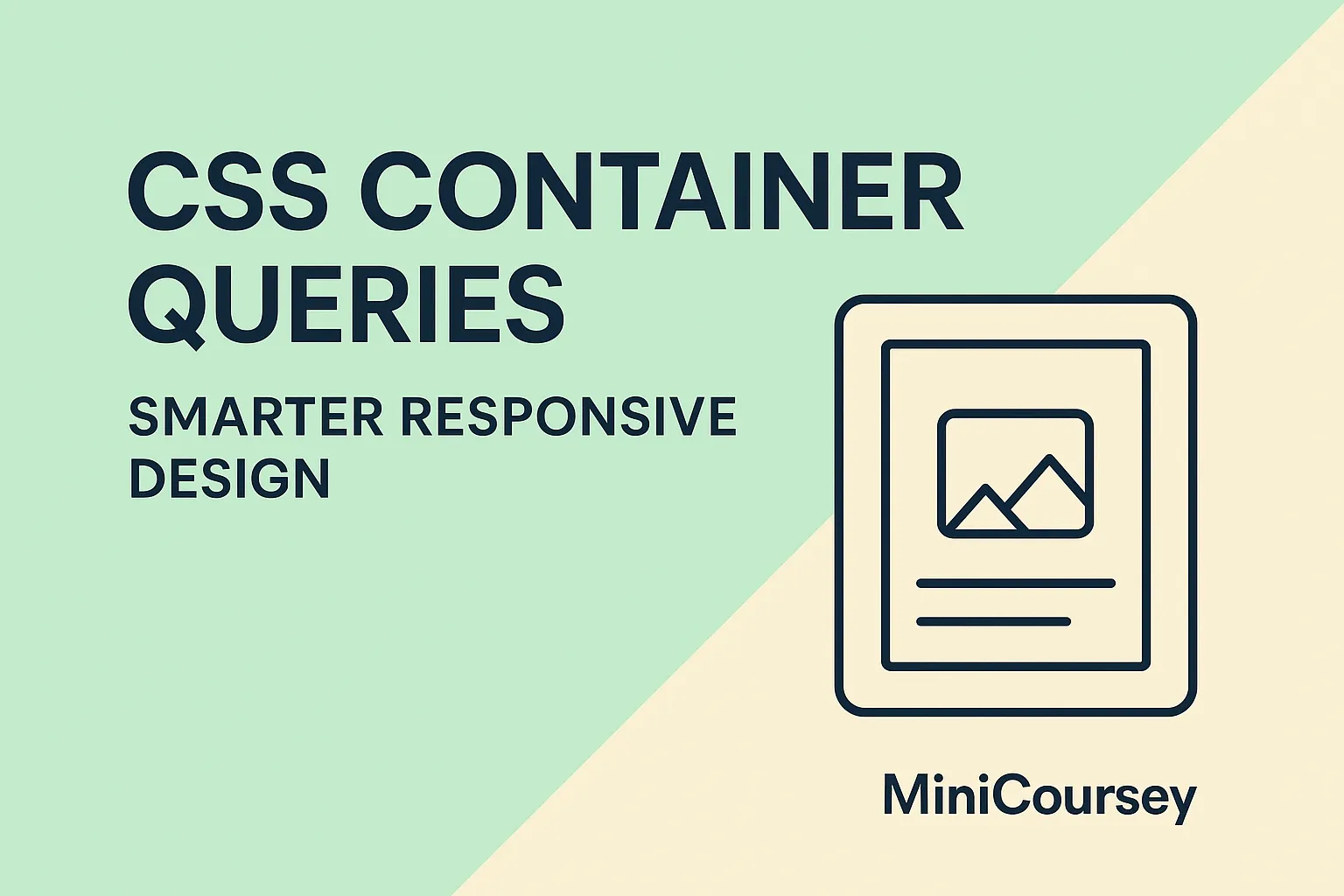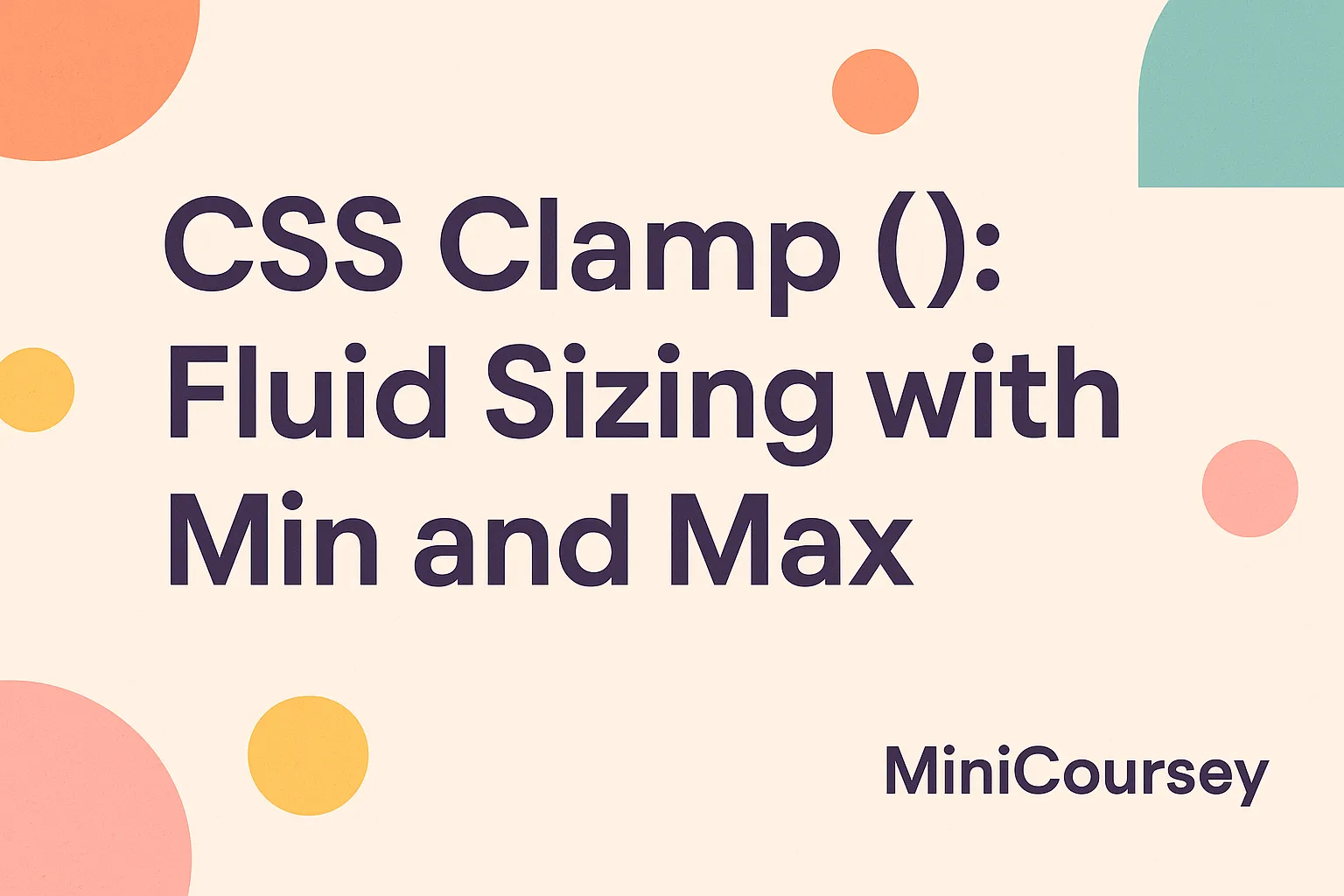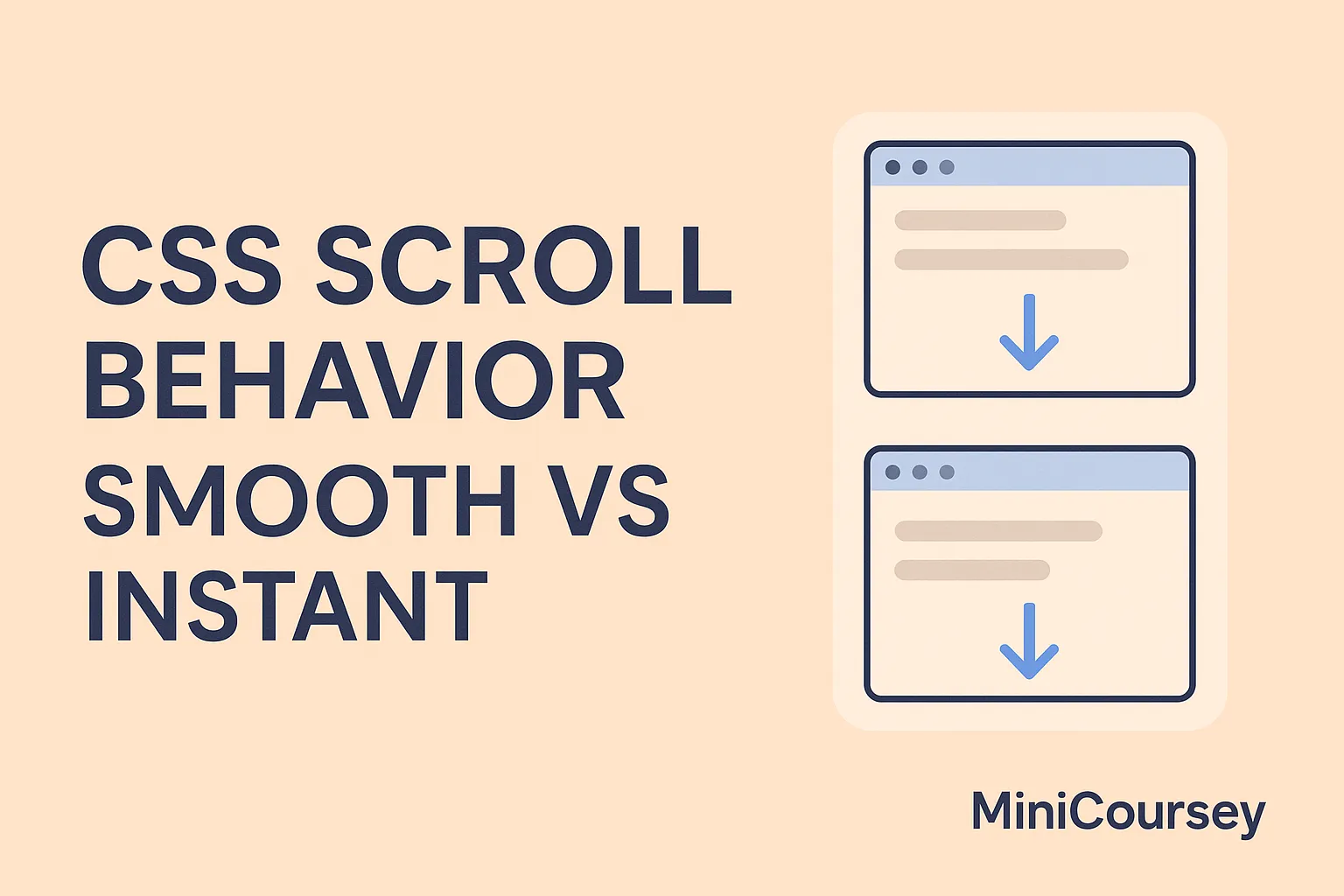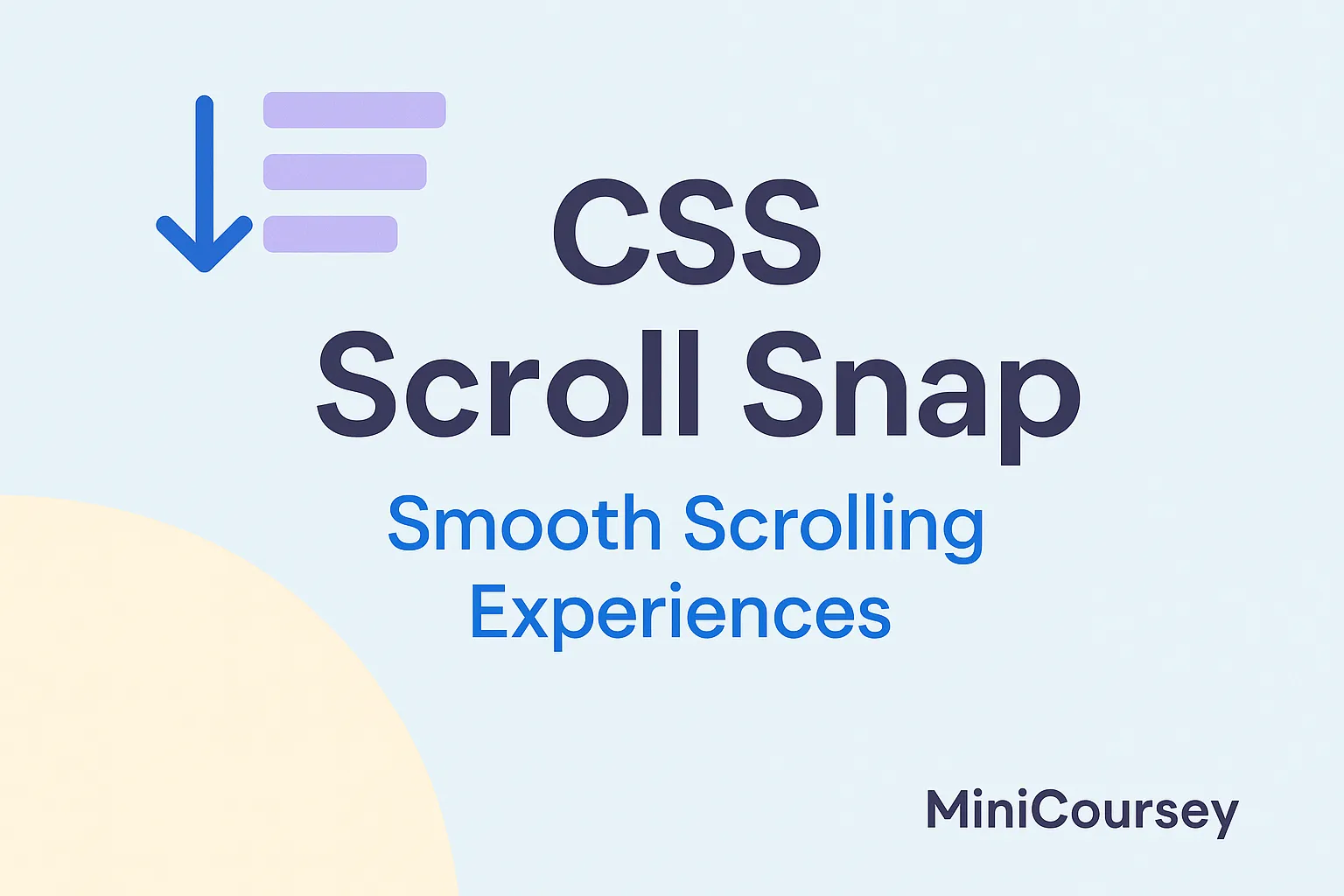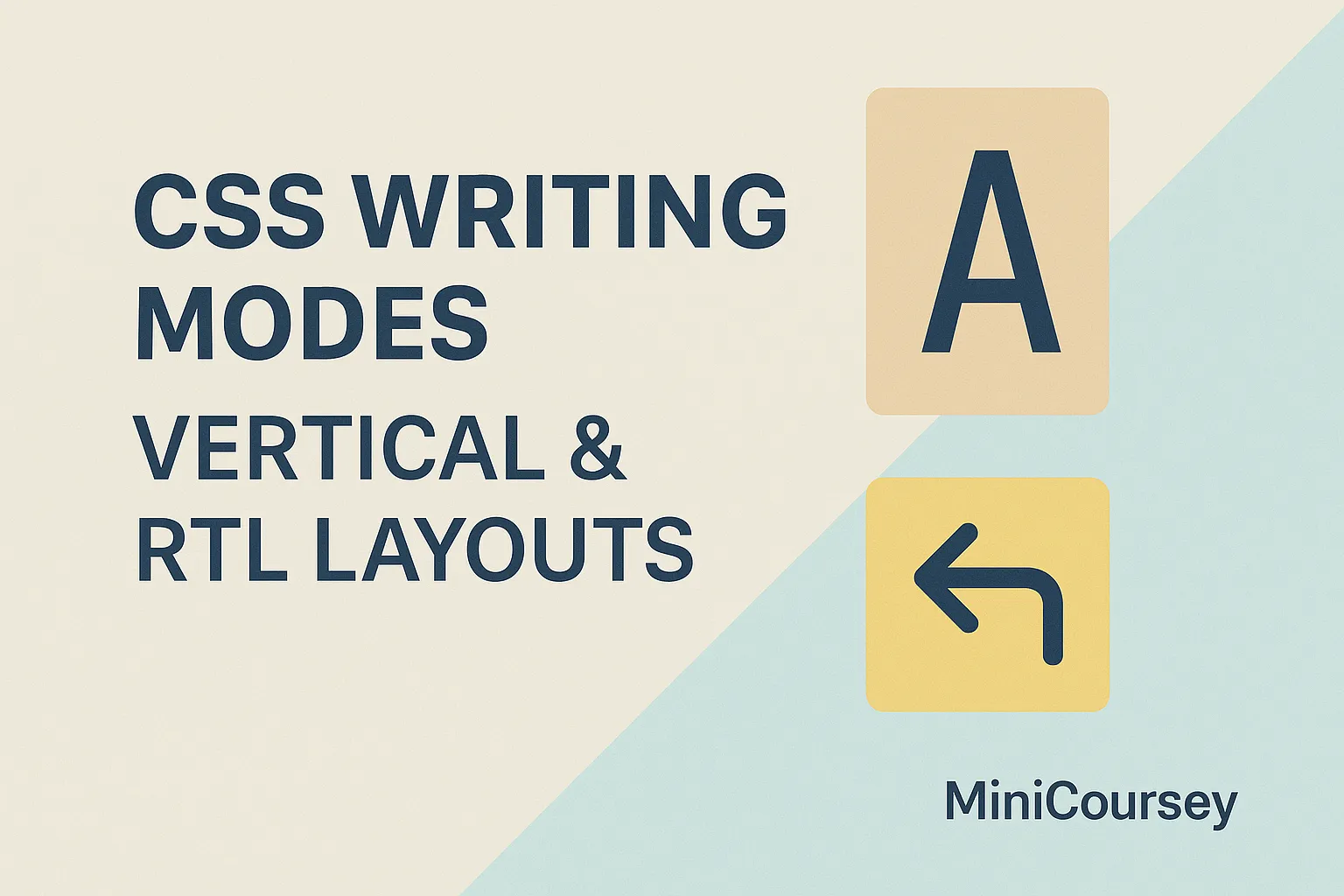CSS @layer — Organize Your Stylesheets
Keeping your CSS organized as a project grows can get tricky fast. The new @layer rule in CSS helps you manage your stylesheets in clear, structured layers. It’s perfect for controlling how resets, base styles, utilities, and components stack in the cascade — all without weird specificity battles. In this MiniCoursey quick guide, you’ll learn … Read more

